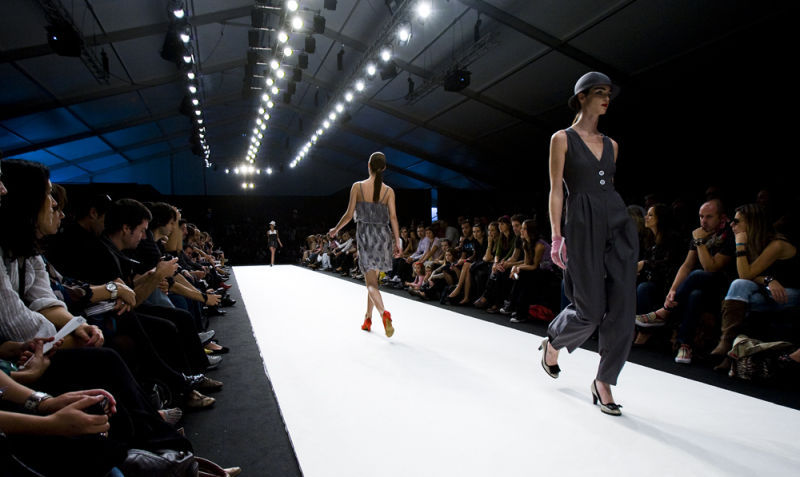Cummings: Accept every body type for fashion
Incredibly thin runway models are on their way out with the growing popularity of using regular-sized people without retouching photos. Clothing stores like Aerie, ModCloth, Coach and Lululemon have been using different campaigns to showcase their products in real life.
April 22, 2014
The airbrushed models in magazines and their hilarious, yet saddening “Photoshop fails” are not exactly new discoveries. The fact that magazine executives make millions of dollars from distorting reality and subsequently changing people’s perceptions of human bodies isn’t exactly the latest controversy. Society is fully aware of how models’ bodies are “fixed” in the magazine industry, and yet it has become so normal to us, that we continue to sit idly by while the real “normal” is replaced with “digitally enhanced.”
But the bodies people are used to seeing outside the magazines — bodies of all shapes and sizes — don’t have to be forgotten, and they don’t have to remain strictly outside the realm of fashion. Many stores and brands are beginning to realize that inviting in everyday people to show off their clothes might actually be the best way to sell those clothes — whether they’re concerned about everyone’s horrible body image or not. Though not every store has adopted this strategy for sales, the positive consumer reaction and benefit to shoppers’ self-esteems would be worth the change in advertising.
Back in January of this year, American Eagle’s smaller spin-off lingerie store, Aerie, announced a new advertising campaign called “Aerie Real” involving photos of their models that hadn’t been retouched. Though the models were certainly in better shape than many average women, the tiny “flaws” that appear on every woman’s body [wrinkles, rolls, dimples, lines, freckles and armpit fat] were all left in their places on the models’ bodies. Originally created to “challenge supermodel standards,” Aerie Real has since spawned #aerieReal, a feature of their website that allows shoppers to upload Instagram photos of themselves wearing the Aerie clothes.
This “style gallery” idea has been used by a number of other stores as well. The popular online vintage clothing store ModCloth not only allows users to upload pictures of themselves showing off their purchases, but also enables photos to be a feature of the review process, allowing buyers to hate or praise the clothes with picture evidence. Likewise, Out of Print Clothing, an online store that sells book-related clothing and accessories, put a literary twist on their “style gallery” by dubbing that section “What’s Your Story?”
A wide range of stores and brands — from Coach to Lululemon — have embraced using regular people in their advertising campaigns. But this is no coincidence. According to the Wall Street Journal, more and more brands are looking to connect with buyers. The article showed that buyers are more willing to consider purchasing something if they see it on a regular person instead of an unusually perfect model. The photos of models tend to show how the clothes look like on a Photoshopped person, not how the clothes would look on a regular, un-retouched person.
But, buyers’ lean toward the “normal” model is exactly the reaction they should be having. For too many years, companies have believed that putting their product on a “perfect” human specimen would entice consumers to yearn for their items, but it has instead turned into a multi-million dollar industry that uses poor self-esteem as a marketing tool. With 91 percent of women and at least 45 percent of Western men unhappy with their bodies, it is vitally important that the fashion industry learn to embrace this new, “regular” style of advertising.
It has become blatantly obvious in the last few years that the models we see in magazines or in advertisements are not even the same models we would see in person. Comedian and TV host Ellen DeGeneres even poked fun at one Photoshop fail recently by having her model guest use long fake arms to point out just how unrealistic these companies are making models look. Though we are expected to look up to models as perfect examples of the human body, not even the models can live up to fashion industry expectations.
There is no perfect specimen of the human body. And while physical fitness is certainly a good sign of health, it is important that people learn to love and respect their bodies in whatever form they take. Being model-thin is just as acceptable a body shape as any, but that body type should not monopolize the fashion industry — nor should any single body type. It is time the fashion industry learned to embrace the diversity of the human body and implement these style gallery or un-retouched campaigns. If they would let us look at ourselves, they would find that we don’t need a role-“model” to look up to, but that we are perfect enough models for ourselves.







